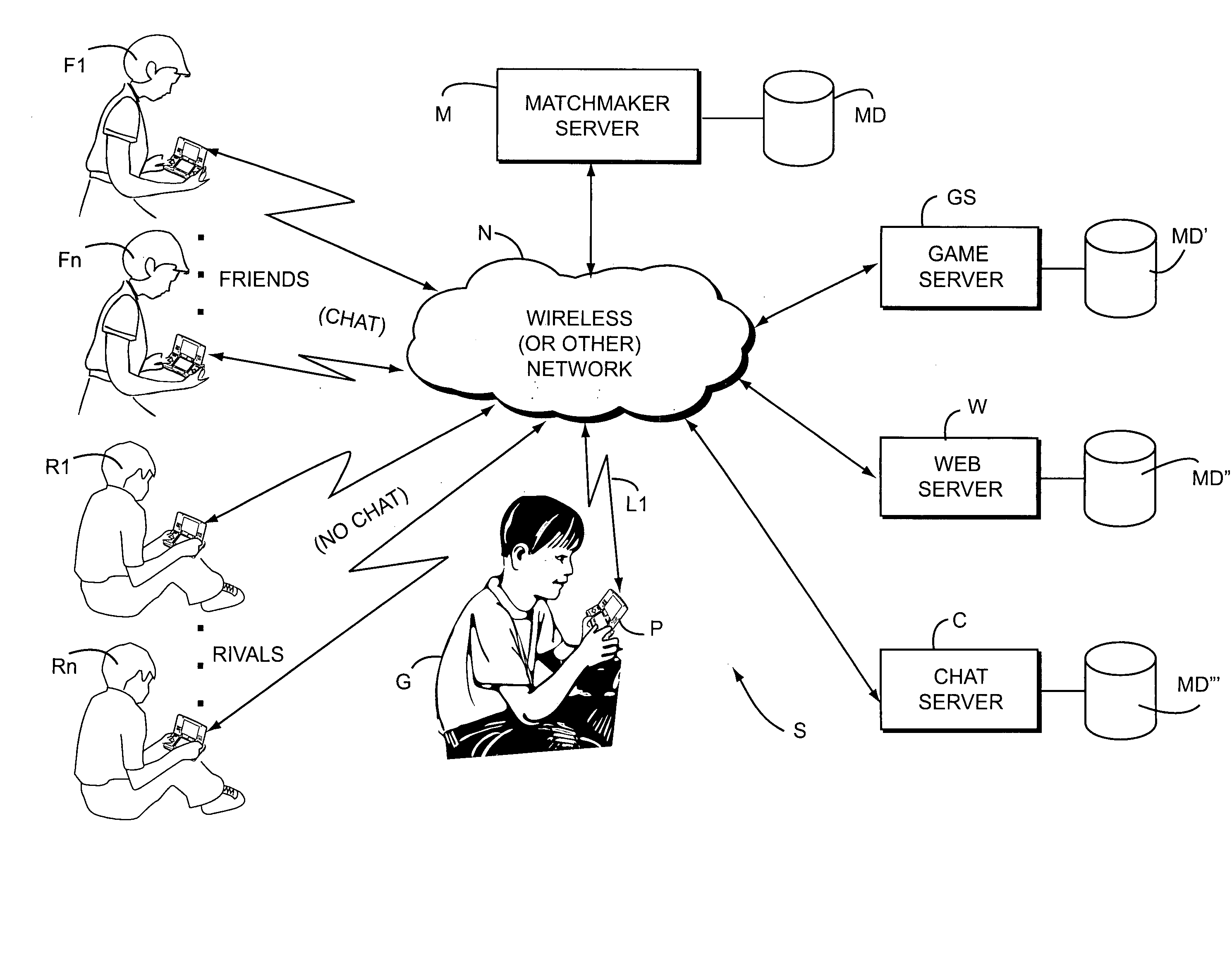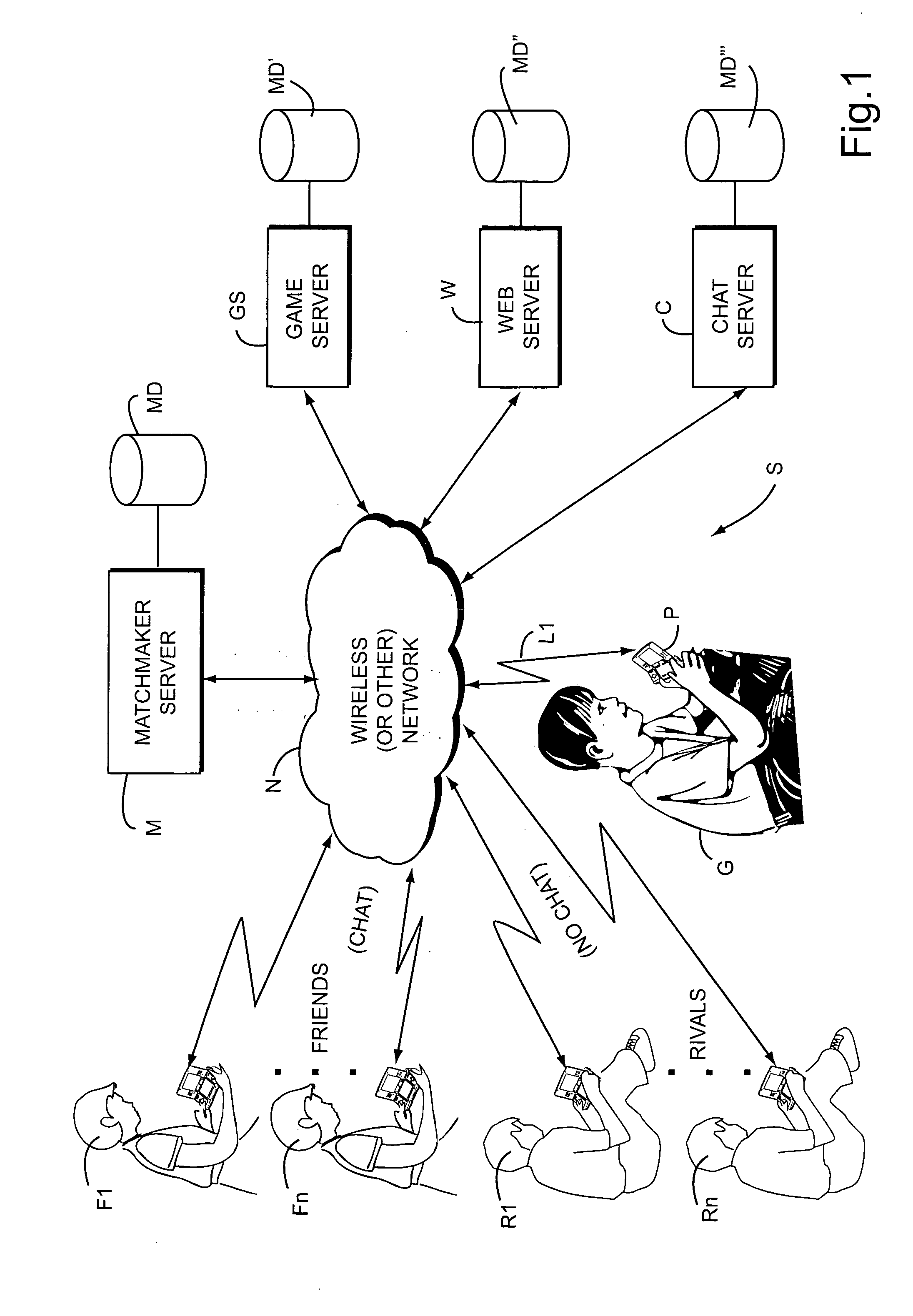Systems, methods and techniques for safely and effectively coordinating video game play and other activities among multiple remote networked friends and rivals
a video game and networked activity technology, applied in the field of networked gaming, can solve the problems of inability to ascertain, sometimes unintended consequences of technology, and create risks inherent in any anonymous or pseudo-anonymous mode of communication
- Summary
- Abstract
- Description
- Claims
- Application Information
AI Technical Summary
Benefits of technology
Problems solved by technology
Method used
Image
Examples
Embodiment Construction
[0077]FIG. 1 shows an exemplary illustrative non-limiting implementation of a networked gaming system S. In the exemplary illustrative non-limiting system S, a gamer G plays a video game or runs another networked application on a networked gaming or other platform P. Platform P can be for example a Nintendo DS portable handheld wireless gaming platform, the Nintendo Revolution platform, or any other gaming or other networked platform capable of playing a game or providing other application(s).
[0078]Gaming platform P connects via a wireless or wired link L1 to a network N. Network N can be for example the Internet, an 802.11 wireless “WI-FI” network in the ad hoc or infrastructure mode, a cellular telephone network, a local area network, a wide area network, or any other network capable of communicating information between devices. Platform P uses the network to allow gamer G to play multi-player games against other gamers F1 . . . FN, R1 . . . RN who may be remotely located. These o...
PUM
 Login to View More
Login to View More Abstract
Description
Claims
Application Information
 Login to View More
Login to View More - R&D
- Intellectual Property
- Life Sciences
- Materials
- Tech Scout
- Unparalleled Data Quality
- Higher Quality Content
- 60% Fewer Hallucinations
Browse by: Latest US Patents, China's latest patents, Technical Efficacy Thesaurus, Application Domain, Technology Topic, Popular Technical Reports.
© 2025 PatSnap. All rights reserved.Legal|Privacy policy|Modern Slavery Act Transparency Statement|Sitemap|About US| Contact US: help@patsnap.com



